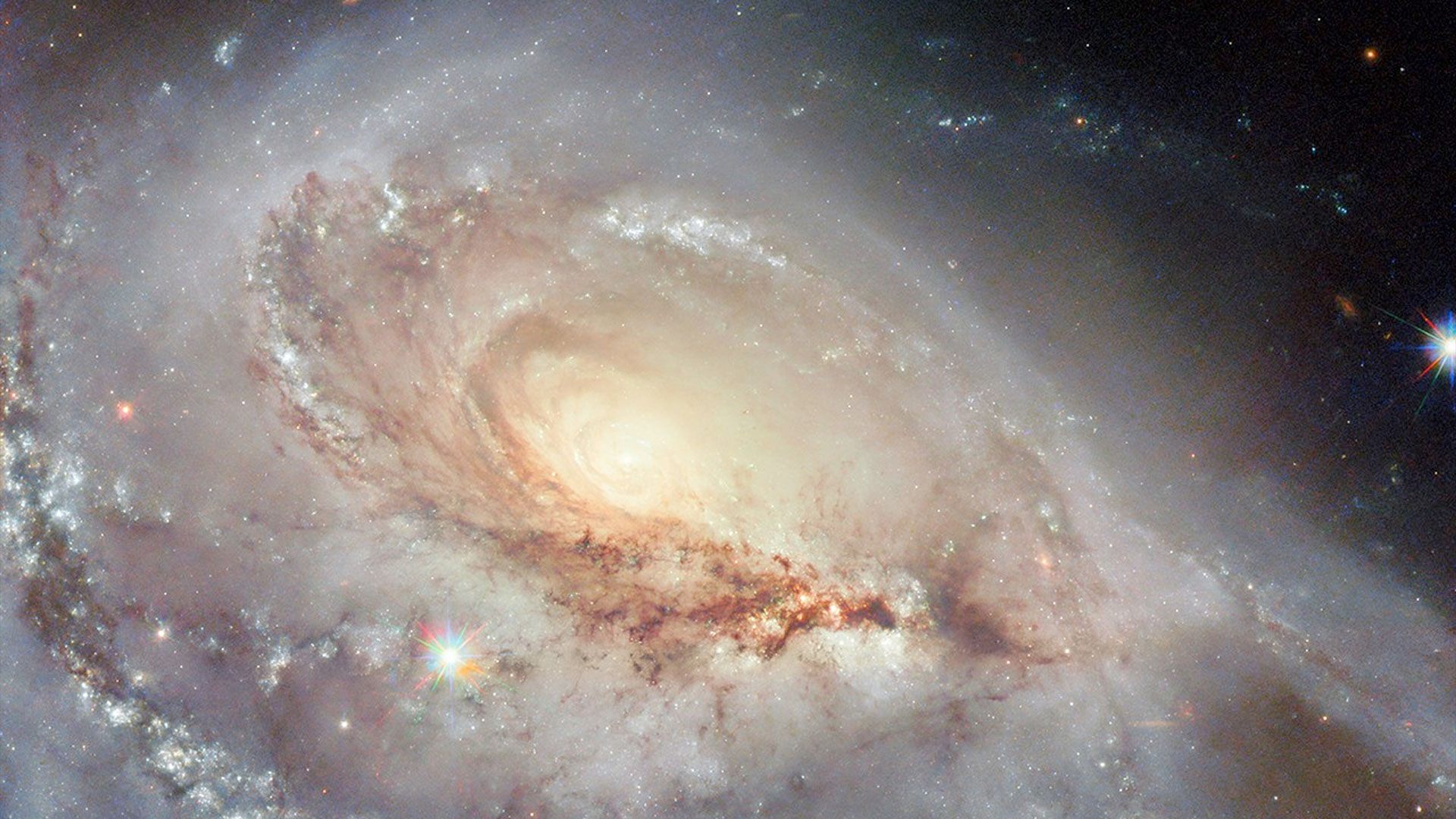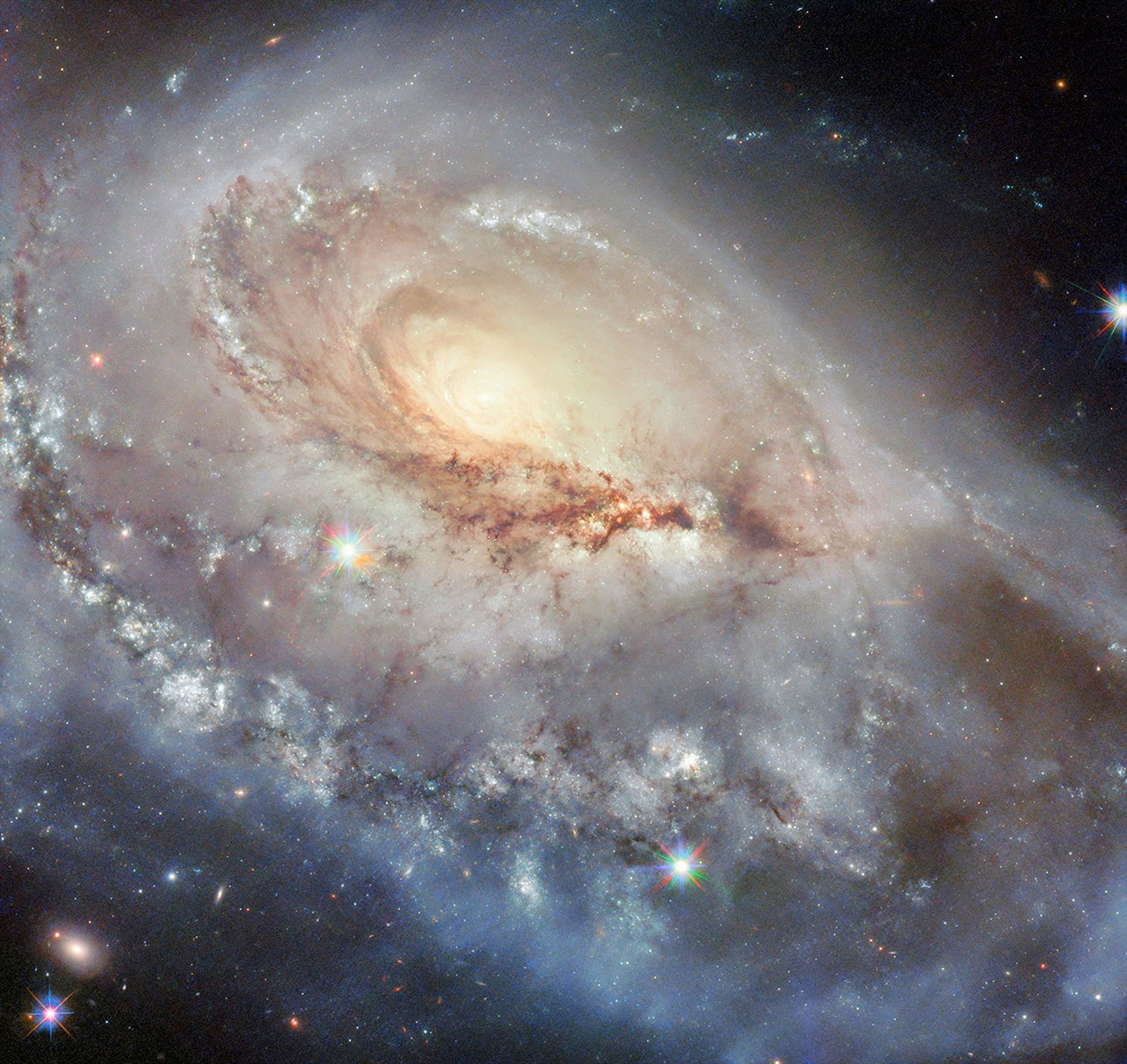
Arp 184 or NGC 1961, a skewed or "peculiar" spiral galaxy, is still stunning in this image from the Hubble Space Telescope.
What is it?
One of the 338 formations cataloged by astronomer Halton Arp in 1966 in his "Atlas of Peculiar Galaxies," Arp 184 or NGC 1961 is a skewed, but still spectacular looking, spiral galaxy as imaged by NASA/ESA's Hubble Space Telescope.
Arp 184 was included in the catalog due to its single broad, star-speckled spiral arm that appears to stretch toward Earth. The galaxy’s far side (as relative to us) has only a few wisps of gas and stars, rather than a similarly spectacular spiral arm.
Where is it?
Arp 184 sits about 190 million light-years away from Earth in the constellation Camelopardalis (The Giraffe).

Why is it amazing?
This Hubble image is the product of three Snapshot observing programs, which are brief observations slotted into time gaps between the orbiting observatory's longer studies.
One of the three programs surveyed galaxies listed in the Atlas of Peculiar Galaxies, as well as A Catalogue of Southern Peculiar Galaxies and Associations, a similar catalog compiled by Halton Arp and Barry Madore.
The remaining two Snapshot programs looked at the aftermath of fleeting astronomical events like the four known supernovae that Arp 184 has hosted in the past three decades.
Want to know more?
You can see another Hubble image of NGC 1961 and view another peculiar galaxy in the Arp catalog. You can also read how the Hubble Space Telescope's capabilities compare today to newer observatories.







